History of Lipetsk
Foundation of Lipetsk
According to one version, a fortified Slavic settlement on the site of modern Lipetsk existed even before the Mongol invasion of the mid-13th century. In the chronicles, the settlement of Lipovichsk was first mentioned in 1283-1284. In 1284, it was completely destroyed and for the next several centuries there was no mention of it.
The village of Malye Studenki Lipskie, located on the site of Lipetsk, was first mentioned in the chronicles in the first half of the 17th century. The road from Moscow to Voronezh passed through this place. Presumably from the end of the 17th century, the development of iron ores began here.
In 1703, the construction of iron plants for the needs of the Russian fleet and army began on the Lipovka River, at the place of its confluence with the Voronezh River. Soon, these plants took the second place in Russia in pig iron smelting. This year is considered the foundation date of Lipetsk.
In 1709, the village was renamed to Lipskie Zavody (“Lipskie Plants”). The traveling palace of Peter I and a number of churches were located here. The rapid expansion of production led to the need to build a unique and largest man-made water reservoir (Lipetsk pond) in pre-Soviet Russia with an area of about 0.7 square kilometers. Lipetsk became a production and logistics center for a large metallurgical complex.
In 1779, by decree of Catherine II, Lipskie Zavody received the status of a town of the Tambov Governorate with the name Lipetsk. At that time, its population was about 6 thousand people. In 1781, Lipetsk received its coat of arms, which depicted a spreading linden tree (“lipa” in Russian) on a gold background, which symbolized the name of the town.
More Historical Facts…
Lipetsk as a resort town of the Russian Empire
In 1791-1803, the Cathedral of the Nativity of Christ, the highest church in Lipetsk, was built. Today, it is still an architectural dominant of the city. The end of the Russian-Turkish war of 1787-1791 moved the Russian borders to the Northern Black Sea region and the need to maintain the Voronezh shipyards disappeared. This fact, together with the depletion of the forests used for fuel, led to the decline of industrial life in Lipetsk.
In 1795, after the opening of new iron-smelting plants in the south of the Russian Empire with a new, more advanced technology for smelting pig iron and steel, the plants in Lipetsk were closed, the bulk of the equipment and workers were transferred to the Lugansk Foundry in Lugansk.
Built for the needs of the plant, the pond in Lipetsk stood out not only in size, but also in its absence of fish. This fact was noticed by the local population. In 1800, Vander, a county medical doctor, reported to the medical board about the healing properties of local mineral waters.
In 1805, a chemical analysis showed the similarity of the Lipetsk mineral waters with the waters of the famous Western European resorts. As it was the time of the Napoleonic wars and social tension in Europe, the resort in Lipetsk gained popularity in the high society of the Russian Empire as a Russian analogue of the Belgian Spa. In 1806, on the territory of the plant and pond, an “English garden” was laid out. Later, it was named Nizhniy Park and became the largest city park in Lipetsk.
In 1806, a big fire broke out in the wooden chaotically built up Lipetsk. After it, the town was rebuilt according to the General Plan with straight wide streets and buildings made of stone and brick. Resort buildings, a hotel, an entertainment hall were built. Noble and merchant mansions were constructed on Dvoryanskaya (Lenina) Street.
In 1862, there were 11,659 residents in Lipetsk. The city had 8 Orthodox churches, 3 schools, a hospital and a post station, three fairs, and five factories producing mainly candles and soap. In 1868-1869, the South-Eastern Railway passed through the city. By the last third of the 19th century, the resort also offered mud, peat, and kumis therapies.
Lipetsk in the first half of the 20th century
In the late 19th and early 20th centuries, the industry of Lipetsk was revived, when, in connection with the expansion of railway construction, Russian and foreign entrepreneurs decided to re-use the iron ore deposits near Lipetsk. According to the all-Russian census, a little more than 20 thousand people lived in the city at that time. In 1899, the construction of the first blast furnace of the Sokolsky Metallurgical Plant began. During the First World War, aircraft construction began to develop in Lipetsk.
In 1921, the Lipetsk Drama Theater was opened. Lipetsk continued to develop as an aviation center. In 1923, an aviation school was opened in Lipetsk to train a new generation of Soviet aviators. But the existing knowledge, technology, and financial resources were lacking. That’s why, in 1925, it was decided to organize a secret joint Soviet-German aviation school here. After Hitler came to power in Germany, it was closed. In 1934, the Red Army Air Force Higher Tactical Flight School was opened in its place.
In 1931, the Novolipetsk Metallurgical Plant was founded. Today, it is known as Novolipetsk Steel or NLMK, one of the largest steel companies in Russia. The construction of this enterprise became a turning point in the history of Lipetsk. Lipetsk turned into a large industrial center. In 1939, the population of Lipetsk was 66,644 people.
During the Second World War, evacuation hospitals were organized on the territory of Lipetsk. In total, up to 40 hospitals functioned in the city during the war. In the period from 1941 to 1942, and then until the end of the war, equipment, several shops and a blast furnace of the metallurgical plant were evacuated to Chelyabinsk and were not returned back. About 7 thousand residents of the city mobilized into the ranks of the Red Army were killed in battles.
In the first years after the war, the local industry was intensively restored. In 1947, the first tram line was opened. In 1949, the pedagogical school of Lipetsk was transformed into the first higher educational institution of the city - Lipetsk Pedagogical Institute.
Lipetsk - the capital of Lipetsk Oblast
On January 6, 1954, during the downsizing of a number of regions of central Russia, a separate Lipetsk Oblast was created, and the city of Lipetsk received the status of a regional center. In 1956, the population of Lipetsk was about 123,000.
The regional capital status allowed the city to develop intensively. Construction of many regional institutions began, roads were paved, a large-scale program of landscaping and street lighting was carried out. In 1966, a direct railway connection with Moscow was opened, and the building of the Lipetsk airport was constructed. In 1989, the population of Lipetsk was 449,635 people.
In the early 1990s, because of the collapse of the USSR, a lot of local industrial enterprises found themselves in a difficult situation, failed to adapt to the market economy, and went bankrupt. However, the city continued to develop.
In 1993, the plant for the production of refrigerators “Stinol” was opened on the basis of the Novolipetsk Metallurgical Plant. It was built by the Italian company Merloni (since 2005 - Indesit). In 1996, the second monument to Peter the Great was opened in Lipetsk, which became an important landmark of the city center.
In 2002-2005, there was a significant reduction in tram transport. In 2004, the washing machine plant “Indesit” was built. In 2008, the special economic zone “Lipetsk” was opened - an industrial area with benefits for foreign capital.
Today, Lipetsk is known as a major producer of steel and rolled products, building materials, household appliances, juices, and mineral water, as well as a training center for Russian pilots. The aerobatic team “Falcons of Russia” is based in Lipetsk.
Pictures of Lipetsk
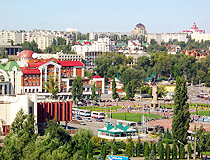
Peter the Great Square and general view of Lipetsk
Author: Sergey Polovinkin
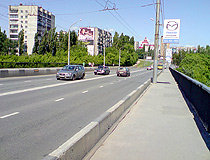
On the street in Lipetsk
Author: Dmitry Lelikov
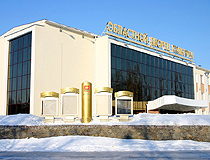
Regional Palace of Culture in Lipetsk
Author: Sergey Polovinkin
Lipetsk - Features
Lipetsk is located on both banks of the Voronezh River in the forest-steppe zone in the east of Lipetsk Oblast in the central part of European Russia. The length of the city from north to south is 22 km, from west to east - 27 km. The City Day of Lipetsk is celebrated on the 3rd Sunday of July.
The climate is temperate continental. Despite the fact that Lipetsk is located at the latitude of Berlin and Amsterdam, winter in the city is with a stable snow cover, the average temperature in January is minus 7.3 degrees Celsius. Summer is warm, the average temperature in July is about plus 20 degrees Celsius.
Lipetsk is the core of the largest agglomeration in Russia with a specialization in the field of full cycle ferrous metallurgy, as well as an industrial, agro-technological, and aviation center. The main enterprise of the city is Novolipetsk Steel (NLMK), which is the largest steel plant in Russia.
The main supplier of raw materials for the enterprise is the Kursk Magnetic Anomaly, one of the largest deposits of iron ore in the world located about 350 km from Lipetsk. NLMK is also the city’s largest air pollutant, although pollution levels have been gradually decreasing in recent years.
The city is located between the federal highways “Don” and “Caspian” and has a developed network of industrial railways. The airport of Lipetsk is located 15 km north-west of the city center and offers regular flights to Moscow. Buses and trams are used as urban public transport.
Better known as a city of metallurgists than as an interesting tourist destination, Lipetsk deserves at least a few hours of attention. Walking around the city center, seeing its historical sights, walking through old parks and alleys, visiting places that are significant for Lipetsk - one day of unhurried sightseeing is quite enough for this.
Main Attractions of Lipetsk
Peter the Great Square - the main festive events in Lipetsk are held on this square including the City Day. One of the symbols of Lipetsk is installed here - the monument to Peter the Great (1996). In 2006, a light and music fountain was opened on the square.
Cathedral of the Nativity of Christ (1791-1842) - a majestic Orthodox church located at Sobornaya (Lenina) Square, the second main square of Lipetsk. It is the spiritual center of Lipetsk and the architectural dominant of the city visible from afar. The height of the bell tower with a spire and a clock is 60 meters. In this square, you can also find a grand staircase with a cascade of fountains next to which there is the stele to Emperor Peter the Great (1869).
Nizhniy (Lower) Park - the largest park in Lipetsk founded in 1805. The green area of the park mainly consists of linden and oak trees. On the territory of this park you can find the house-museum of Peter the Great, a pavilion with mineral water, rides for children and adults including a Ferris wheel, several monuments, a zoo, a planetarium, several cafes.
Komsomolsky Pond - an artificial reservoir in Lipetsk located on the opposite side of Petrovskiy Proyezd from Nizhniy Park. In 2003, a monument was erected here in honor of the 300th anniversary of the city of Lipetsk - a gilded ship with very high masts placed on a column.
Lipetsk Regional Museum of Local Lore - the central museum of Lipetsk Oblast. In total, there are 18 exhibition halls, where you can see exhibits on the history of the Lipetsk region from antiquity to the present day: paintings, icons, old books, ethnographic materials, a collection of toys of the 19th-20th centuries, furniture, jewelry, outfits of nobles, weapons of the Second World War, and even a wax figure of Peter I. Lenina Street, 25.
Lipetsk Regional Art Museum. The museum is opened in a former merchant house - an architectural monument of the 19th century. The collection has about 2 thousand works of Russian artists from 1930 to the present: paintings, sculptures, graphics, examples of decorative and applied art. Lenina Street, 7?.
Art Museum named after V.S. Sorokin (House of the Master) - a two-story mansion built in the Art Nouveau style in 1910, an architectural monument. Artworks created by Russian authors of the 20th century are exhibited here including a large collection of paintings of the artist Viktor Sorokin. Lenina Street, 2.
Fine Arts Center. In the halls of this center, opened in 2007, the works of contemporary artists of Lipetsk and Russia are exhibited: paintings, souvenirs, arts and crafts, graphics. Kosmonavtov Street, 98.
Lipetsk Museum of Folk and Decorative and Applied Arts - one of the youngest museums in the Lipetsk region with unique exhibits. In total, the museum has about 7,000 exhibits. Here you can see items of peasant life, traditional folk costumes, examples of folk crafts and handicrafts of the Lipetsk land. Kosmonavtov Street, 2.
Lipetsk Park of Miniatures in “Bykhanov Sad” Park. Here you can see models of the most interesting buildings of Lipetsk and neighboring towns such as Yelets, Lebedyan, Dankov, as well as villages of the Lipetsk region. Gagarina Street, 70b.
Church of the Venerable Martyr Evdokia (1817-1818) - a picturesque Orthodox church in the classical style, a historical and cultural monument located in the center of Lipetsk. Gagarina Street, 70.
Aviatorov (Aviators) Square. The main attraction of this square is a combat aircraft installed on a pedestal in 1969 in honor of the pilots of the Lipetsk air squadron. In 2003, the figures of the pilots L.A. Krivenkov and S.M. Sherstobitov were placed next to the monument. In 1968, their aircraft broke down in the sky over Lipetsk and, at the cost of their lives, they took it away from residential areas.




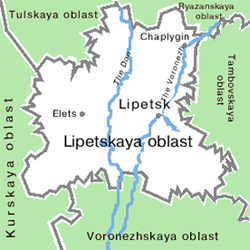



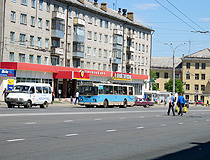
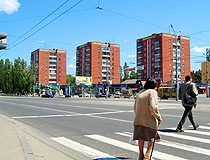
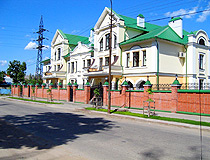
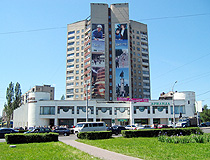
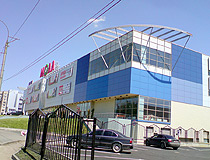
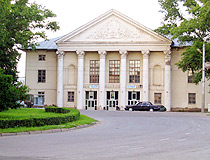
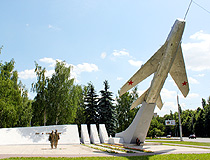
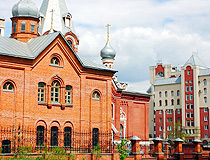
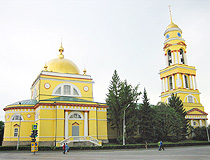
The comments of our visitors